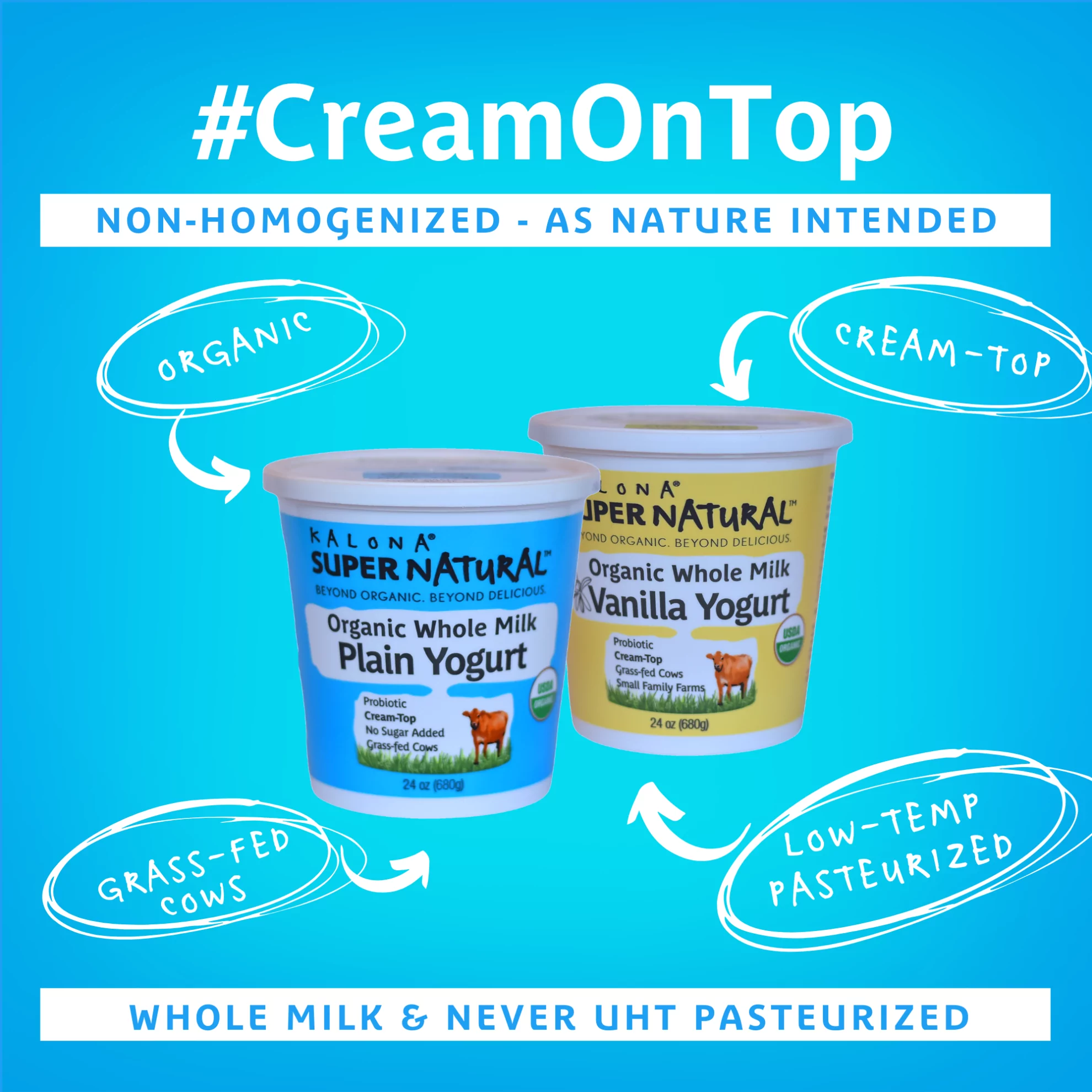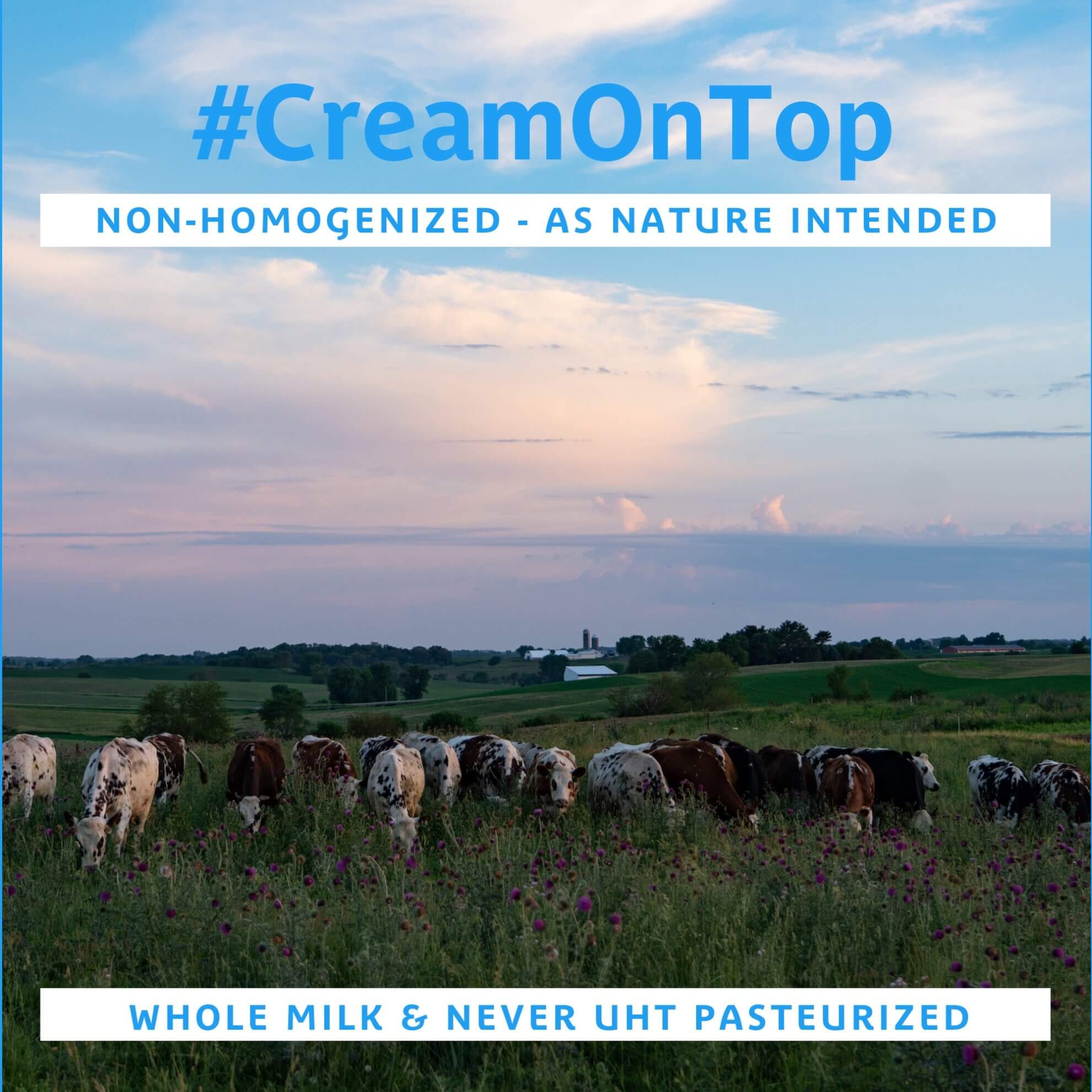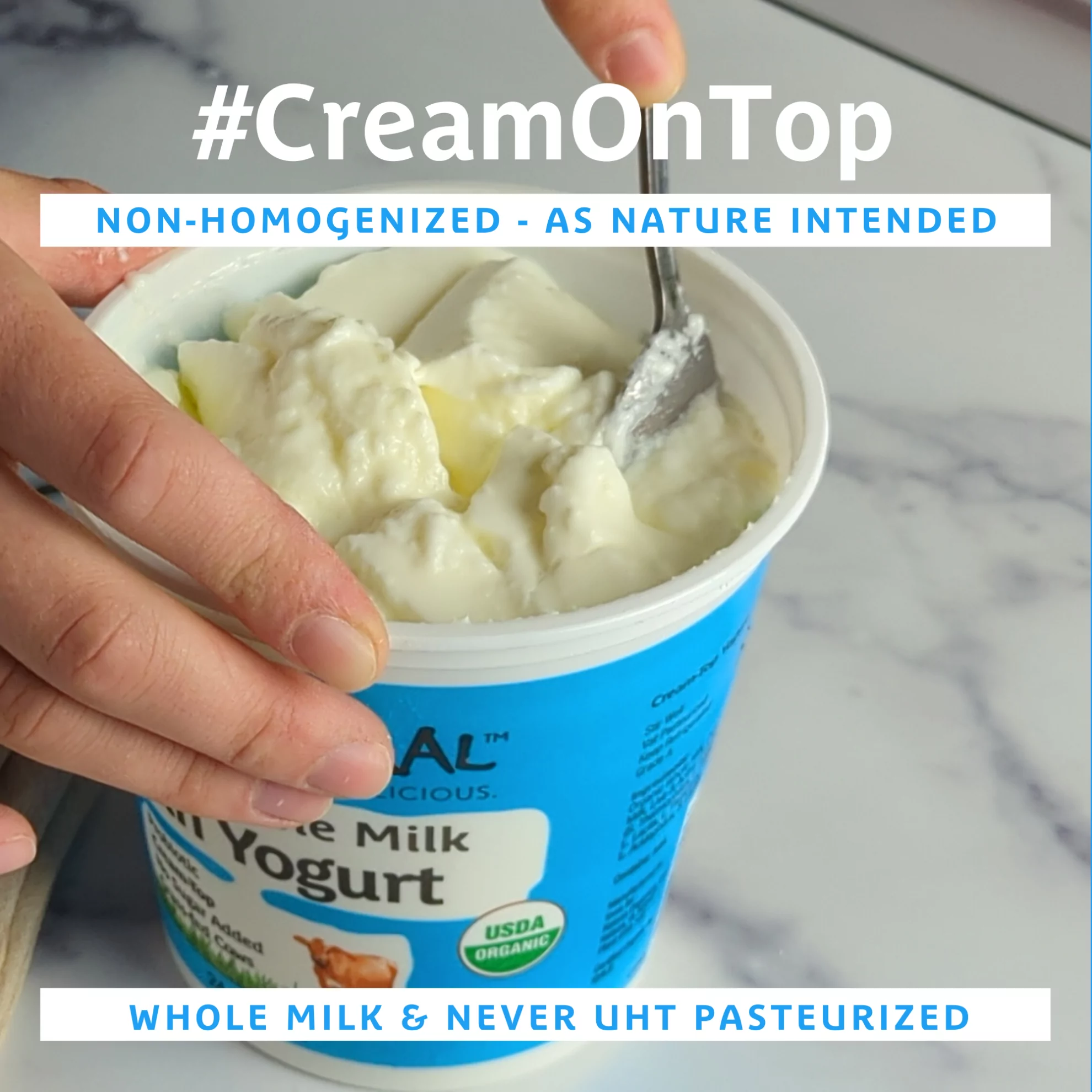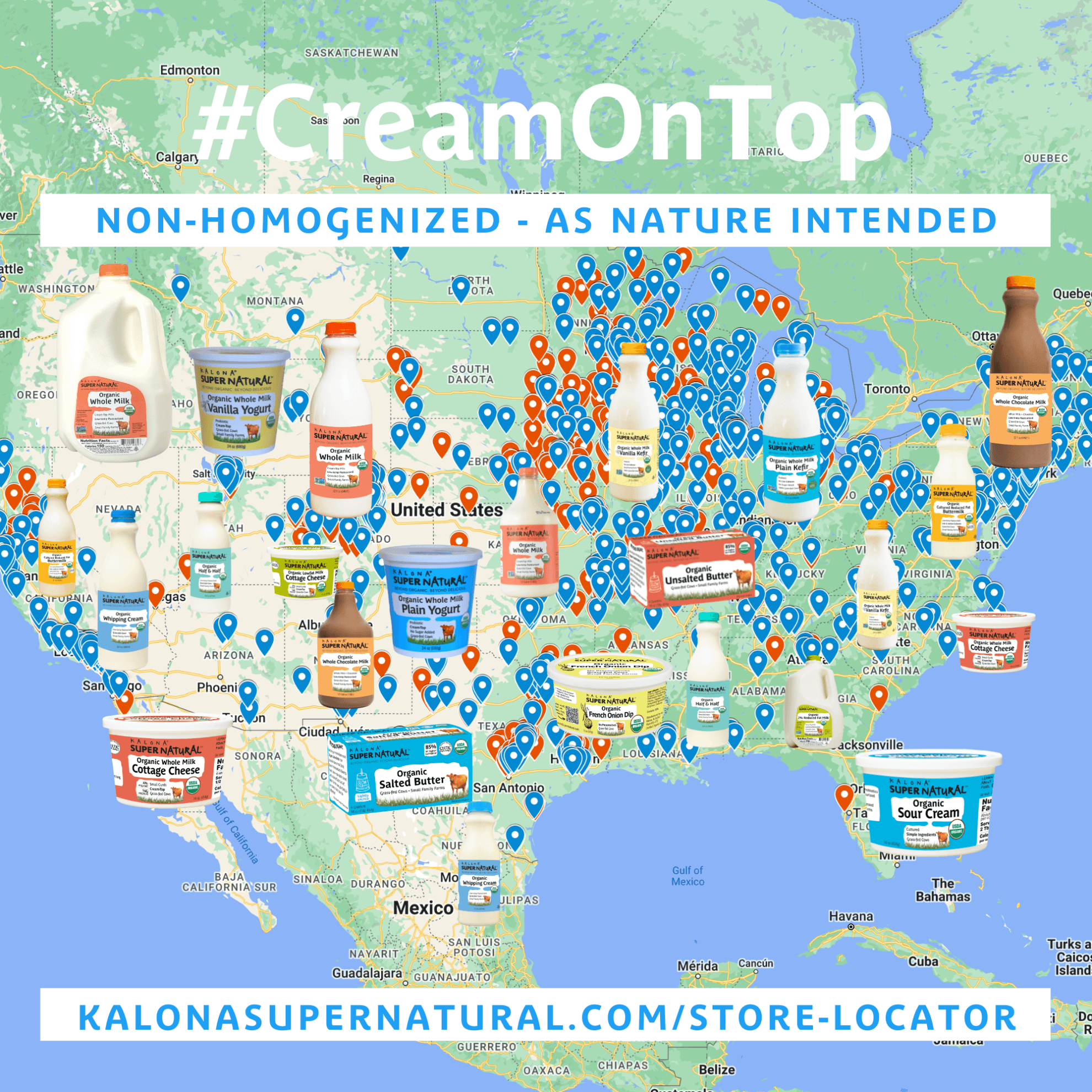What is the difference between homogenized cream on top milk and homogenized milk?
Cream on top milk is non-homogenized, which means that the cream has been allowed to naturally separate from the rest of the milk and rise to the top.
This is very different from “homogenized” milk in which the cream has been smashed under more than 2,000 lbs of pressure into millions of tiny pieces that then disseminate throughout the milk.
Kalona SuperNatural organic milk, buttermilk, kefir, whipping cream, half and half, eggnog, and even our cottage cheese and yogurt is non-homogenized. Most conventional milk and even many organic milk and dairy products are homogenized.

Why would any milk company – moreover an organic company – want to homogenize their milk?
Some accounts suggest that the practice was first started by unscrupulous milk sellers. When they mixed the cream into the milk, customers couldn’t tell how much cream they were actually getting. This allowed the merchant to skim off the prized cream and use it for butter while still selling the milk for the same price.
Then along came a French inventor, Auguste Gaulin, who created the first mechanical “homogenization” machine.
Inventors invent things so no fault there and some ice cream manufacturers preferred the cream being fully mixed into the milk for their products, but the practice didn’t really take off until the sales people got involved.
That’s not surprising is it?
Much of the dairy industry feels the need to constantly manfacture “new” products in order to have more things to sell to consumers and so “homogenized” milk slowly took hold in the United States in the early 1900s.
Most enthusiasm for the “new” milk was generated by William McDonald in the mid 1900s, who attended many dairy conventions and produced reports on the sales potential. Then the federal government got involved, developed guidelines and gave it’s stamp of approval.
Homogenized milk was a bit more convenient for consumers and backed by marketing campaigns the widespread manufacture of homogenization machines and demand by consumers took off. Like so many things, most milk became heavily processed.
Kalona SuperNatural milk is NOT and not homogenizing our cream top milk is what makes it different than 99% of milk sold in the United States.
Can you tell the difference between homogenized and non-homogenized?
Does homogenized have cooking, health, or taste benefits?
What do you think? What have you experienced?
We’ll explore these in future articles and on social media.
To learn more about our Cream-Top Farms, Products, and Stores click the images below.



